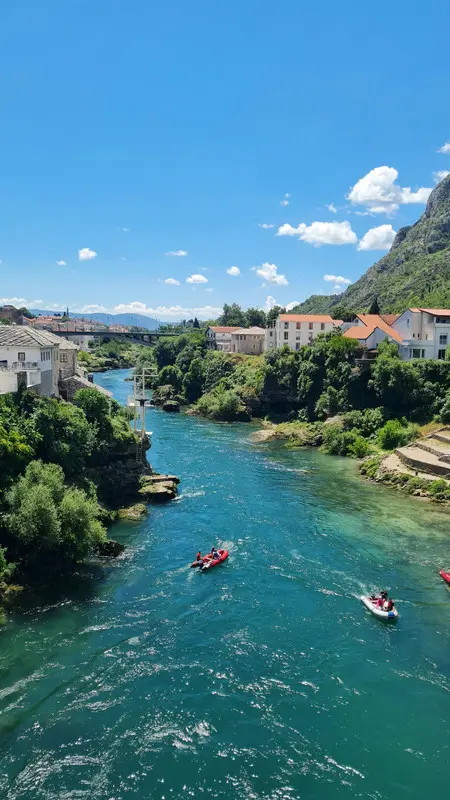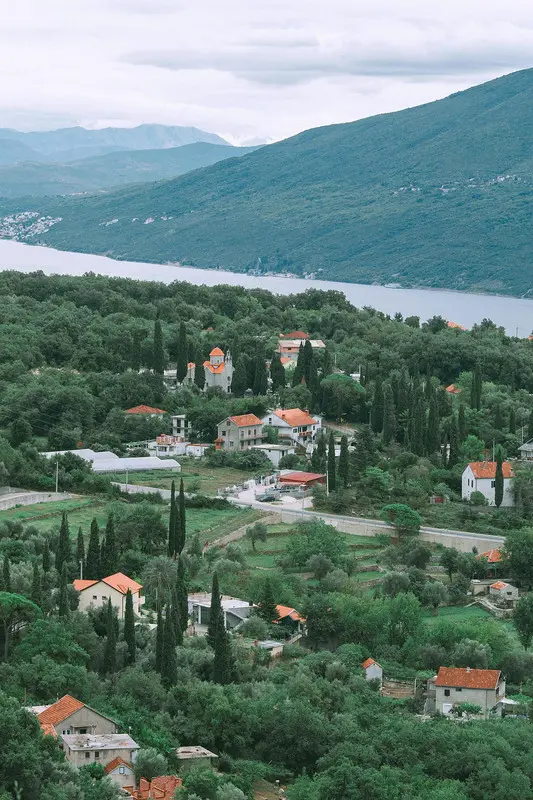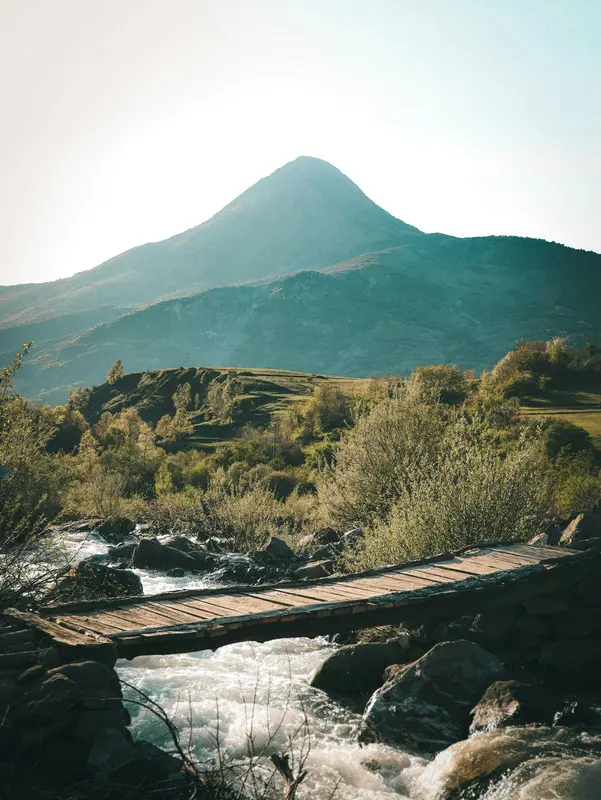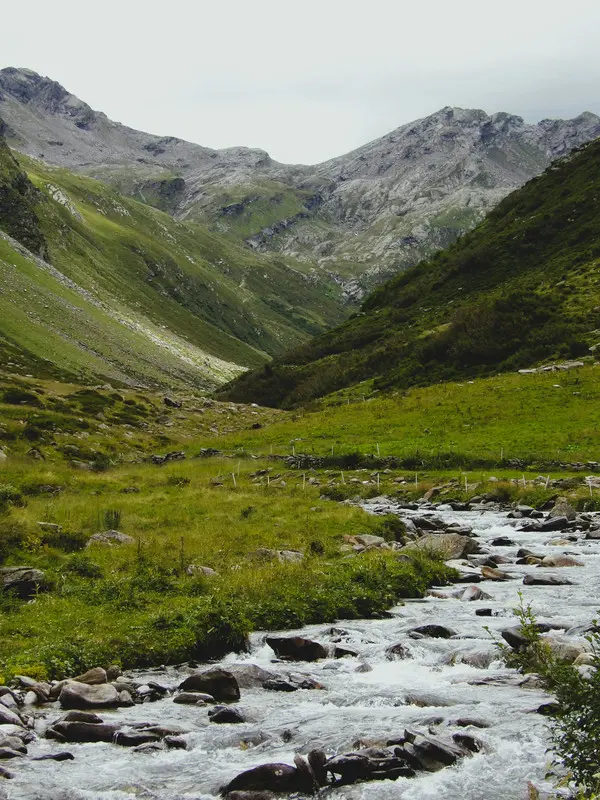Marble Trout : What are Marble Trout?
The Marble Trout: A Guide to One of Europe's Rarest Gems

Introduction
The marble trout is one of the most enigmatic and rare trout species in the world. Known for its mesmerizing marbled pattern, this freshwater predator is native to a few isolated drainages in southeastern Europe. It’s both a conservation icon and a highly prized gamefish among fly anglers. This article explores the biology, habitat, fisheries, and angling strategies used to catch this elusive trout.
What Is a Marble Trout?
The marble trout is a salmonid fish located in the Adriatic drainage basin. Closely related to brown trout, it’s sometimes considered a subspecies, but most scientists now classify it as a distinct species due to its unique morphology and genetics.
Marble trout are named for their striking coloration—olive, gray, and white marbling across their body, sometimes extending to the fins. No two individuals look exactly alike.
Distribution and Habitat
Native Range
Marble trout are found exclusively in the Adriatic Sea tributaries, mainly in:
- Slovenia
- Bosnia and Herzegovina
- Montenegro
- Northern Albania
- Northeast Italy
Their original range has been reduced over the years due to habitat loss, pollution, and especially hybridization with introduced brown trout.
Prime Habitats
Marble trout prefer:
- Cold, well-oxygenated, fast-flowing rivers
- Rocky and gravelly substrates
- Clear waters, often in karstic (limestone) regions
They thrive in limestone spring creeks and alpine rivers, which offer plenty of cover, prey, and spawning grounds.
Life History and Behavior
Spawning
- Season: Autumn (October–December)
- Habitat: Gravel beds in shallow riffles
- Egg incubation: Overwinter, hatching in spring
Marble trout exhibit high site fidelity, returning to the same spots to spawn.
Feeding Habits
- Juveniles: Insects, larvae, and plankton
- Adults: Opportunistic predators—fish (including their own species), amphibians, and large invertebrates
Larger individuals are piscivorous and display ambush-predator behavior, hiding under boulders or root wads.
Behavior
- Solitary and territorial
- Nocturnal tendencies in summer
- Shy and extremely wary of human presence
Size and Trophy Potential
| Type | Weight | Length |
|---|---|---|
| Average | 1–3 kg (2–6 lb) | 40–60 cm (16–24 in) |
| Trophy | 5–10 kg (11–22 lb) | 70–100+ cm (27–39+ in) |
Marble trout are among the largest freshwater trout species in the world. Specimens over 10 kg (22 lb) have been documented, especially in Slovenia’s Soča River basin.
Unique Characteristics
- Coloration: Marbled body with no spots or few small ones—distinct from brown trout
- Size: Capable of reaching extreme sizes compared to other trout
- Hybridization risk: Readily hybridizes with brown trout, producing fertile offspring
- Behavior: More elusive and secretive than other trout
- Growth: Slower-growing than brown trout but longer-lived
Their unique pattern and rarity make them a bucket-list species for fly anglers and ichthyologists alike.
Major Marble Trout Fisheries
Slovenia
Slovenia is the epicenter of marble trout conservation and fly fishing. Key rivers include:
| River | Notes |
|---|---|
| Soča River | Iconic emerald-green river with large wild marble trout and fly-only sections |
| Idrijca River | Renowned for big trout in a stunning alpine setting |
| Trebuščica | Small but productive tributary with wild fish |
| Lepena, Tolminka, and Bača | Clear mountain streams, often with C&R regulations |
The Slovenian Fishing Association and Tolin Fisheries manage these rivers sustainably with barbless-only, fly-only policies in many areas.

Soča River, Slovenia
Photo Credit: Pexels: Oliver Dohrn
Bosnia and Herzegovina
| River | Notes |
|---|---|
| Neretva River | Large river with both hybrids and native-like fish; best in upper tributaries near Konjic |
| Pliva River | Spring creek with crystal-clear water and karstic features; may contain native-like fish |
| Drina River | Hybrid-dominated but scenic and productive; suitable for experienced anglers |
| Rakitnica River | Remote tributary of the Neretva; high-elevation with better purity potential |

Neretva River, Bosnia
Photo Credit: Pexels: Seda Ozturk
Montenegro
| River | Notes |
|---|---|
| Lim River | Long river with hybrid populations; upper reaches may hold more native genetics |
| Zlorečica River | One of the few remote streams where native-like fish may persist |
| Tara Tributaries | Spring-fed and isolated creeks near Durmitor may harbor wild remnants |
| Komarnica River | Remote and rugged; very limited access but potentially interesting habitat |

Montenegro
Photo Credit: Pexels: Orlova Maria
Northern Albania
| River | Notes |
|---|---|
| Drin River | Historically held marble trout; now likely hybridized or extirpated |
| Valbona River | Alpine beauty in Valbona Valley National Park; unknown genetic status |
| Buna River | Lowland river system with historic marble trout range; now brown/hybrid dominant |
| Shala River | Scenic and remote; untested population status but worth exploration |

Albania
Photo Credit: Pexels: Dajana Reci
Northern Italy
| River | Notes |
|---|---|
| Tagliamento River | Historically important; many stretches now hybridized |
| Isonzo River (Italian side) | Connects with Soča; some restoration underway |
| Torre and Natisone | Friuli-Venezia Giulia rivers with hybrid marble/brown populations |
| Piave River | Alpine river system with unclear marble trout status |

Italian Alps
Photo Credit: Pexels: Simone Franzinelli
Fishing Techniques
Marble trout are famously challenging to catch, especially the larger individuals. They demand stealth, precision, and a deep understanding of river dynamics.
1. Fly Fishing
The most respected and ethical method for targeting marble trout. Techniques include:
Dry Fly
- Best for smaller trout or during hatches
- Effective patterns: Elk Hair Caddis, Parachute Adams, CDC Comparadun
Nymphing
- Most productive for numbers
- Use Czech or Euro-nymphing with tungsten flies
- Patterns: Hare’s Ear, Pheasant Tail, Perdigon
Streamers
- Best chance for trophy fish
- Present big flies in deep pools, undercut banks, and structure
- Use: Sculpzillas, Zonkers, Woolly Buggers, Game Changers
2. Spinning (where allowed)
Less common in catch-and-release sections, but used in general-regulation waters.
- Lures: Small spoons, spinners (Mepps Aglia, Panther Martin), crankbaits (Rapala Original, CountDown)
- Colors: Natural (brown, olive, silver)
3. Bait Fishing
Rarely used due to conservation focus, and often restricted or banned in marble trout rivers. Worms or natural baits are not recommended.
Recommended Gear and Tackle
Rods
| Type | Weight | Length | Notes |
|---|---|---|---|
| Dry Fly Rod | 3–5 wt | 8'6"–9' | Accurate casting, soft tip |
| Nymphing Rod | 3–4 wt | 10'–11' | Euro-nymphing technique |
| Streamer Rod | 6–8 wt | 9' | Tosses large streamers |
Reels
- Smooth drag essential
- Line capacity for large fish
- Match the rod weight
Lines
- WF Floating line for dries and nymphs
- Sink-tip or full sinking for streamers
Leaders and Tippet
- Use 9–12 ft leaders
- Tippet: 5X–6X for dry flies; 3X–5X for nymphs and streamers
- Fluorocarbon recommended for stealth and abrasion resistance
Wading Gear
- Studded boots (rocky rivers)
- Breathable waders for alpine cold waters
- Polarized glasses for sight-fishing
Conservation Status
Marble trout are listed as Vulnerable by the IUCN. Their main threats include:
- Hybridization with brown trout
- Habitat degradation from dams, agriculture, and deforestation
- Poaching in unmanaged areas
Conservation Efforts
Slovenia leads in marble trout conservation with:
- Captive breeding programs using pure DNA lines
- Reintroductions to historic habitats
- Strict C&R and barbless-hook regulations
- Scientific monitoring and angler education
Organizations like Tolin Ribiške Družine (Tolmin Angling Club) and The Marble Trout Project have successfully restored several wild populations.
Wild Marble Trout vs. Hybrids by Country
One of the biggest challenges for marble trout conservation — and a key concern for anglers — is hybridization with non-native brown trout (Salmo trutta). Because the two species are closely related and fully inter-fertile, brown trout introductions throughout the 20th century led to widespread genetic mixing.
The result? In many rivers where marble trout once thrived, you’ll now find hybrid populations — fish with physical and genetic traits of both species. Some retain the marbled appearance, but others look more like brown trout with partial marbling or “ghost markings.” Here's how the situation looks country by country:
🇸🇮 Slovenia – Best Wild Populations
Slovenia has done the most to restore and protect pure marble trout.
- Pure wild populations: Found in isolated tributaries (e.g., Upper Soča tributaries like Zadlascica, Trebuščica, Lepena)
- Genetically pure zones: Thanks to selective reintroductions from pure strains bred in hatcheries, Slovenia now has ~10 confirmed pure populations
- Hybrids: Still occur in main rivers like middle/lower Idrijca and parts of the Soča, but efforts are ongoing to contain them
Angling Tip: If you’re fishing in designated marble-only zones (especially catch & release sections), you have a strong chance at catching a wild, pure-strain marble trout.
🇧🇦 Bosnia and Herzegovina – Mixed and Hybrid-Dominant Waters
Bosnia’s rivers are stunning and fish-rich, but:
- Hybridization is widespread, especially in the Neretva and Drina basins
- Brown trout dominate many waters due to stocking and natural expansion
- Some rivers still hold native-like fish, especially small karst creeks and upper spring-fed tributaries (e.g., near Konjic or Pliva River headwaters)
Angling Tip: Ask local guides or clubs about “clean” populations. In many rivers, you may catch hybrids that look marbled but are genetically mixed.
🇲🇪 Montenegro – Likely Hybrids with Pockets of Wild Fish
Montenegro has less research and management, so the status of marble trout is less clear:
- Hybrids are common, especially in accessible rivers near towns
- Potential wild pockets exist in headwaters of the Lim, Zlorečica, and remote spring-fed systems
- Marble trout here may show darker, more muted marbling, sometimes confused with local brown trout strains
Angling Tip: If you’re an adventurous angler, fishing remote, high-elevation creeks may give you a shot at native-looking fish — though they may not be genetically pure.
🇦🇱 Albania – Least Studied, Possibly Lost Populations
Albania is believed to have once hosted native marble trout in Adriatic-draining rivers like the Buna and Drin systems.
- Today, very little scientific data exists
- Stocking and pollution have likely wiped out many pure populations
- Some reports suggest that hybrid or relic populations survive in small creeks, but no confirmed pure wild populations remain
Angling Tip: Albania has huge potential, but conservation and monitoring are lacking. Focus on exploration rather than targeting “pure” fish here.
🇮🇹 Italy – Native Range, But Heavily Hybridized
Northern Italy’s Po River tributaries (e.g., Tagliamento, Isonzo) were historically marble trout strongholds. However:
- Massive brown trout introductions occurred in the 20th century
- Most rivers now hold hybrids or pure brown trout
- Efforts exist to re-establish pure populations, especially near the Slovenian border (e.g., Isonzo/Soča system on the Italian side)
Angling Tip: Some rivers in Friuli-Venezia Giulia may still hold wild marble trout — ask local clubs for info and DNA-testing-backed stocking efforts.
How to Tell a Hybrid from a Pure Marble Trout?
While DNA testing is the only certain method, look for these visual indicators:
| Feature | Pure Marble Trout | Hybrid Fish |
|---|---|---|
| Body Pattern | Sharp, maze-like marbling | Broken marbling, spotted flanks |
| Spots | Very few, if any | Red or black spots, especially on tail |
| Jaw Length | Long lower jaw ("kype") | Less pronounced |
| Coloration | Pale, ghostly, or olive-based | More golden or reddish hues |
When in doubt, assume hybrids are present and treat all fish with care, especially in protected rivers.
Summary: Country-by-Country Purity Outlook
| Country | Pure Populations? | Hybrid Risk | Management Level |
|---|---|---|---|
| Slovenia | ✅ Yes | Moderate | ✅ Very High |
| Bosnia & Herzegovina | ⚠️ Partial | High | ⚠️ Moderate |
| Montenegro | ⚠️ Unknown | High | ⚠️ Low |
| Albania | ❌ Likely gone | Very High | ❌ Very Low |
| Italy (north) | ✅ Limited | Very High | ⚠️ Moderate to High |
Preserving wild marble trout is a delicate balance between recreation and conservation. Always follow local regulations, use barbless hooks, and report any unusual fish to local fisheries or conservation groups.
Conclusion
The marble trout is more than just a rare fish—it's a living emblem of Europe’s freshwater biodiversity. With its haunting beauty, elusive nature, and immense size potential, it continues to capture the imagination of anglers and scientists alike.
Fishing for marble trout is about more than catching a fish; it’s about experiencing pristine alpine rivers, practicing mindful angling, and contributing to the protection of a species on the edge.
If you’re lucky enough to hook into one, treat it with respect. Release it carefully, and you’ll become part of one of Europe’s most remarkable conservation success stories.
Resources & Further Reading
The World's Most Complete Fishing Resource
We're building the ultimate fishing encyclopedia—created by anglers, for anglers. Our articles are created by real experienced fishermen, sometimes using AI-powered research. This helps us try to cover every species, technique, and fishing spot imaginable. While we strive for accuracy, fishing conditions and regulations can change, and some details may become outdated or contain unintentional inaccuracies. AI can sometimes make mistakes with specific details like local access points, parking areas, species distributions, or record sizes.
Spot something off? Whether it's an incorrect boat ramp location, wrong species information, outdated regulations, or any other error, please use the "Help Us Improve This Page" section below. Your local knowledge makes this resource better for every angler.
Explore Related Topics
Discover more articles to deepen your knowledge
Curating articles for you...
Create your own Research Page using AI
Try our AI assistant for free—sign up to access this powerful feature